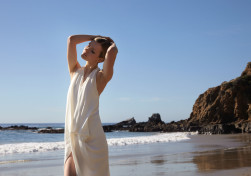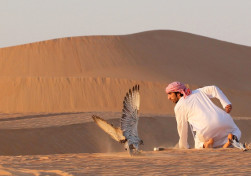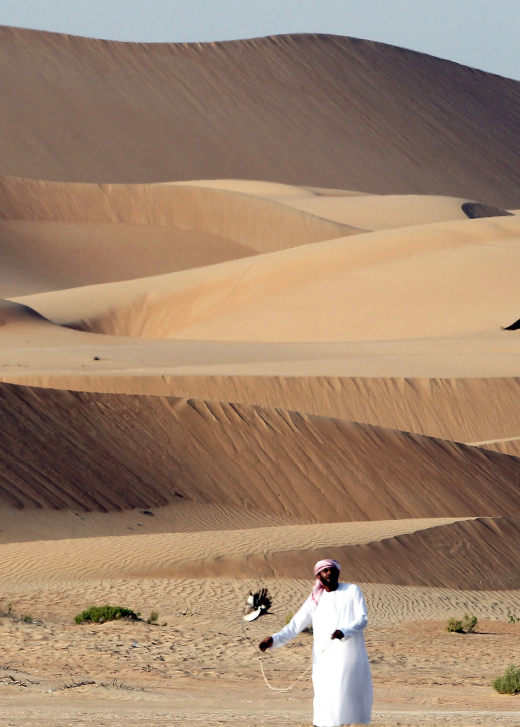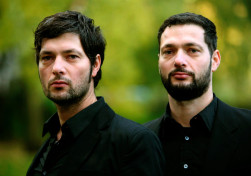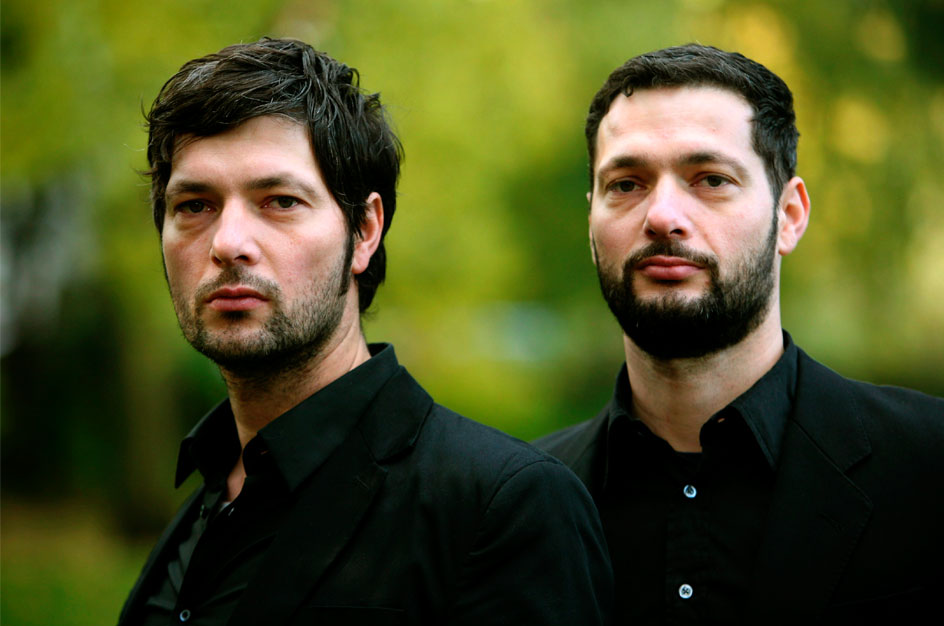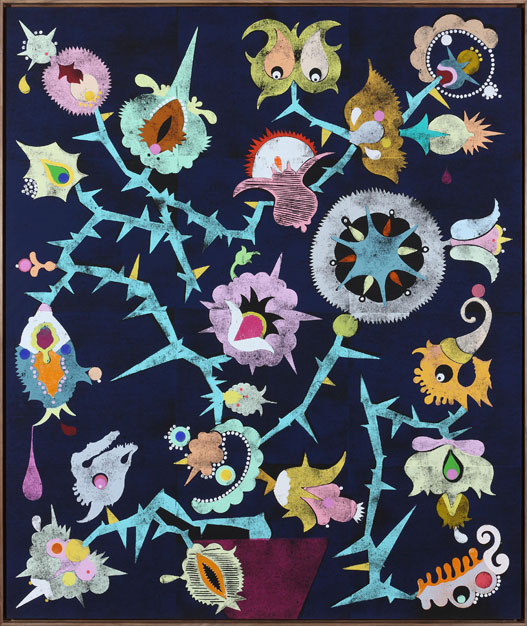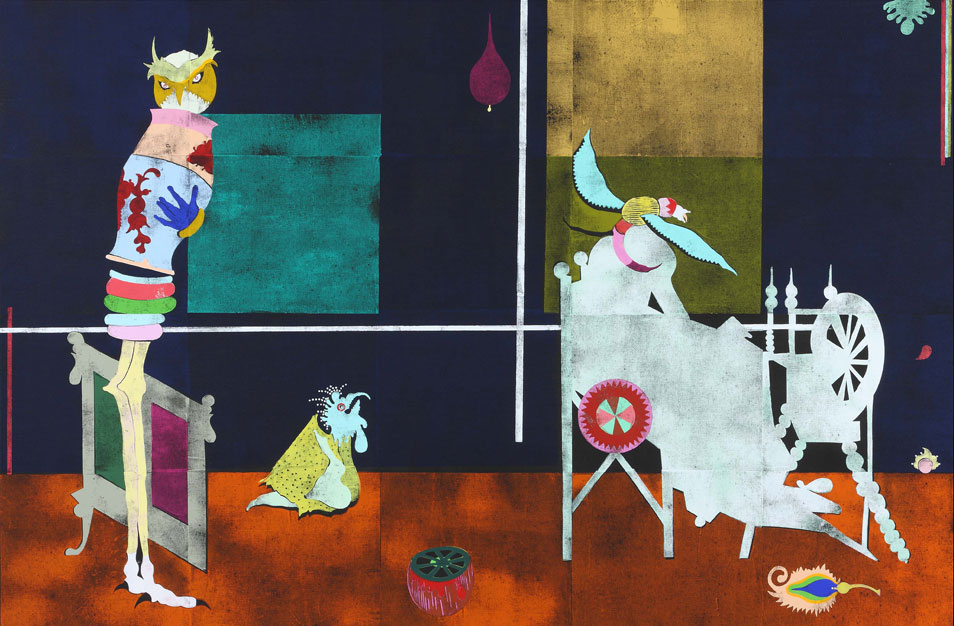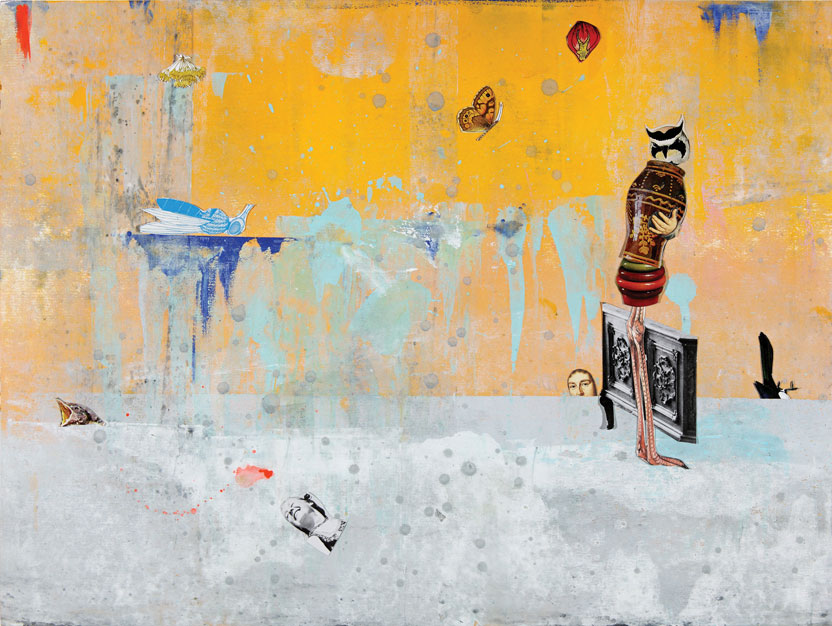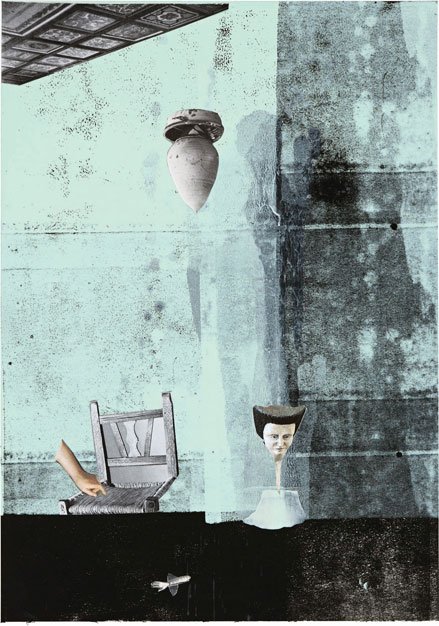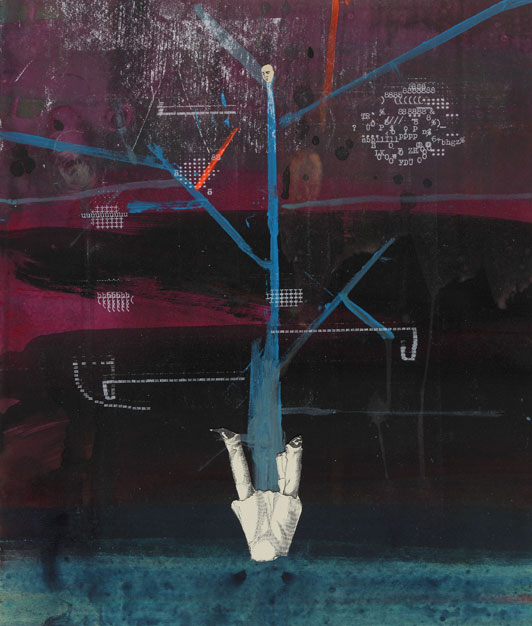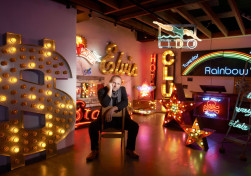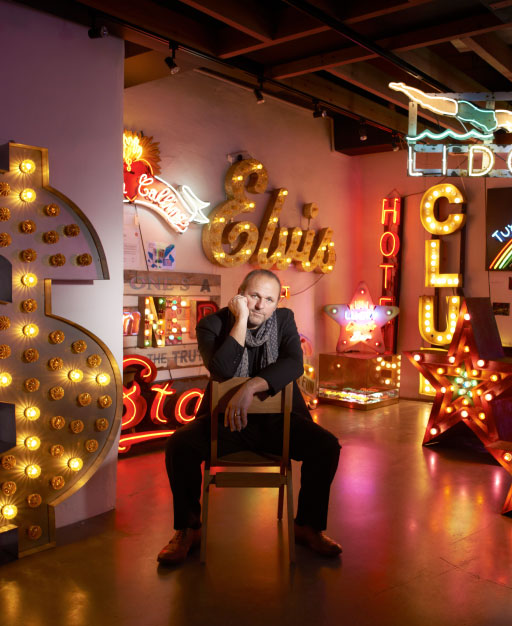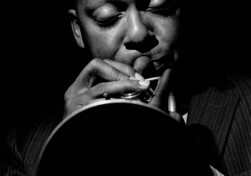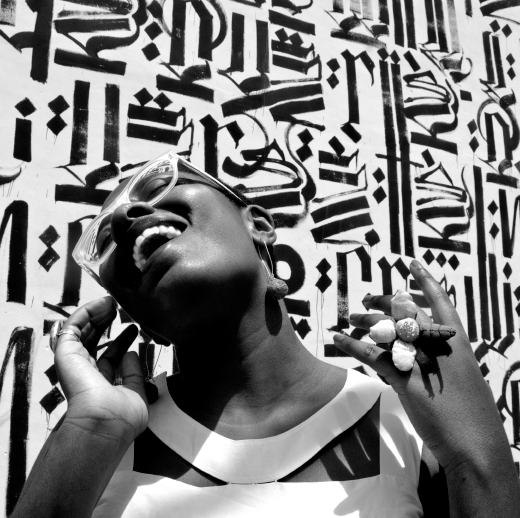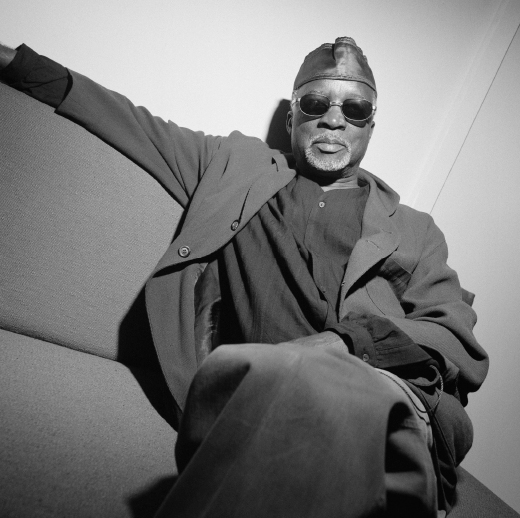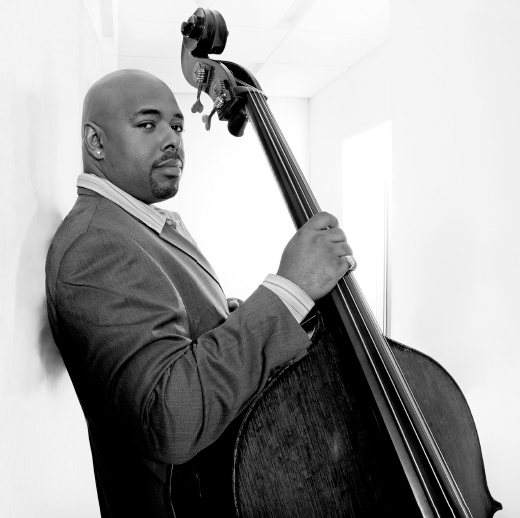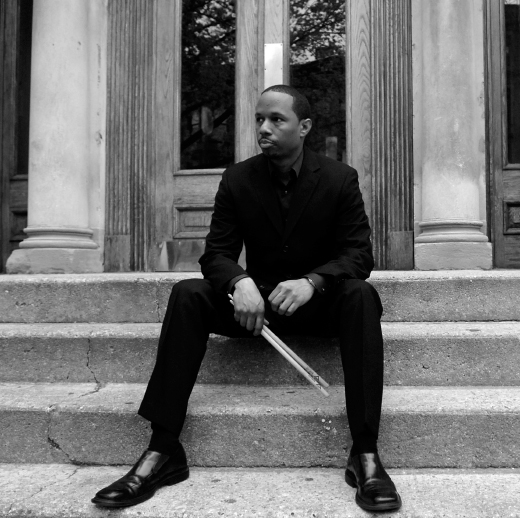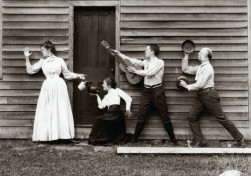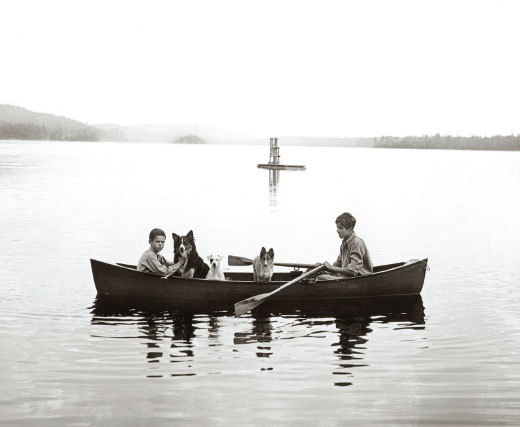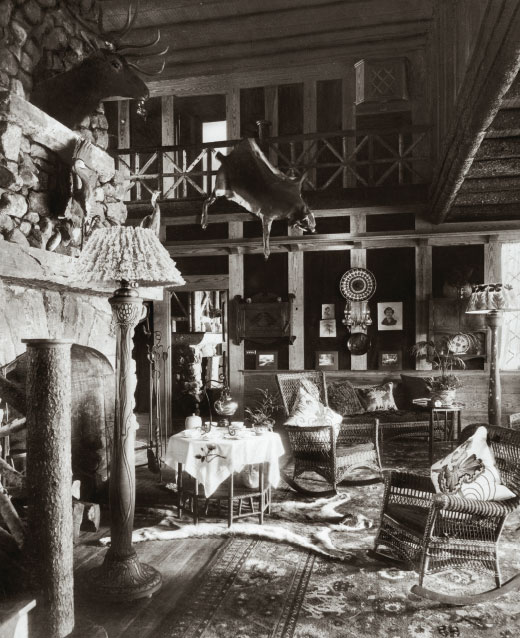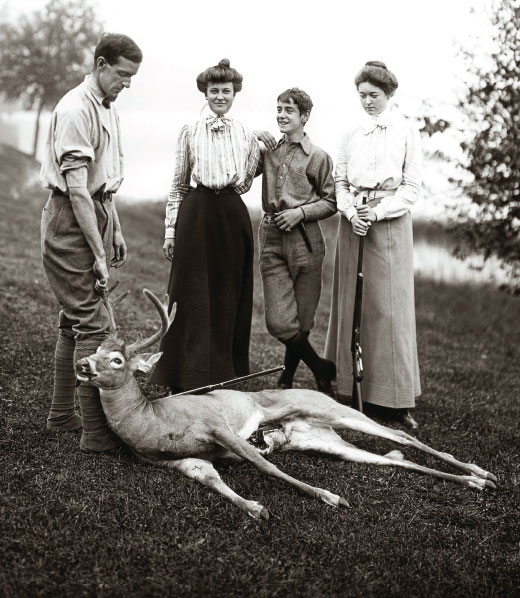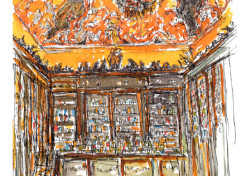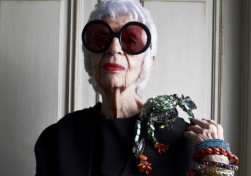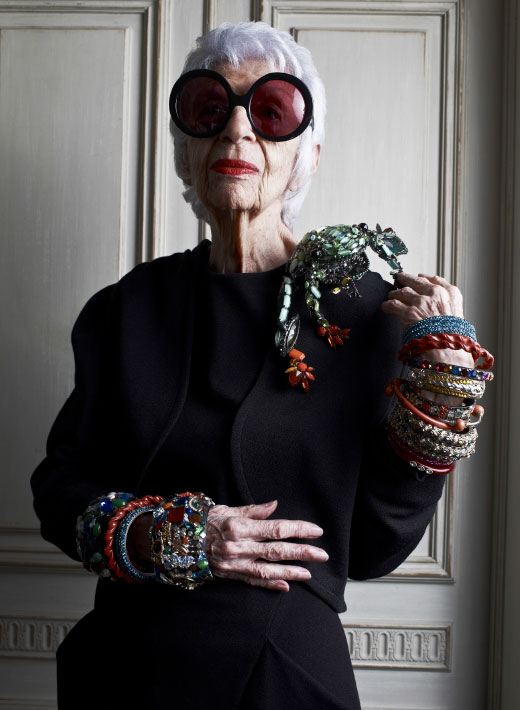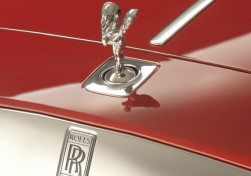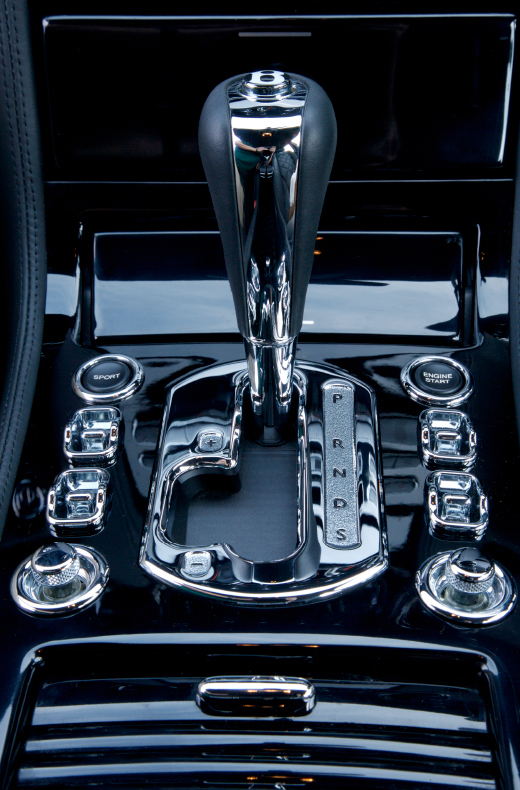It takes place in those empty lands that have fascinated men for millennia, a seemingly soundless world of sand and solitude. Sighting its prey with eyes round as dark marbles, the bird reels and swoops, diving at speeds of up to 200 miles an hour before rising again into the azure sky that canopies the desert. So it has been throughout centuries for the longwinged and shortwinged in this world of lures, snares, jesses, hoods and blocks.
The language of the Arabian falconer, like that of his counterparts across the globe, is as time-worn and universal as the sport of hawking itself. Most of us, to borrow a line from Hamlet, wouldn’t know “a hawk from a handsaw”. That, however, has not prevented a perennial fascination with what has been called the real sport of kings, no matter how much a pauper or commoner we might be. Who hasn’t caught sight of a hawk or falcon soaring on currents above the countryside and not been struck by its imposing appearance and mastery of flight? As a journalist who has spent much time in Afghanistan, a country with a long and fine tradition of falconry, I have often watched birds of prey in the mountains and deserts of that beautiful but troubled land. In his majestic book, Falconry in the Land of the Sun: The Memoirs of an Afghan Falconer, the legendary Sirdar Mohamed Osman, grandson of the King of Afghanistan, recalls his adventures across India, Pakistan and Central Asia in pursuit of his passion. But it is perhaps in the Arab world where this sport is most deeply and fervently pursued, binding man and raptor in an intimate dance of life and death.
In visits over the years to places as diverse as Iraq, Jordan, Qatar and the UAE, the sight of a falconer whirling a feathered, baited lure has become familiar as he teaches his bird to strike again and again at its quarry before swooping down to land on his gauntleted arm. And nowhere has this sight been so indelibly etched on my memory than in the reddish-orange desert dunes of the Rub al Khali, the Empty Quarter, which sits little more than an hour and a half’s drive south of Abu Dhabi. It was here in the late 1940s and early 1950s that the great British Arabist, Wilfred Thesiger, accompanied Sheikh Zayed of Abu Dhabi for months on camel back, sleeping in the open, feeding on hares and bustards that were the quarry of their falcons. “It was very still with the silence which we have driven from our world,” wrote Thesiger in what was to become his classic book, Arabian Sands.
The visitor to Arabia is often told that the desert life is over, and to a great extent it is true. But the silence that Thesiger speaks of can still be found, as can the Arab falconer. In these high-tech internet-dominated times, in this part of the world there remains a self-conscious defence against the tide of modernity. A region flush with petro-dollars and opulent lifestyles still has a burning need, it seems, to preserve a tradition that provides an ageless communion with nature. In this, the Arab love of falconry continues to play a vital role. Indeed in many Arab lands, the falcon has become part of contemporary iconography, its sharp-beaked, taloned image appearing on everything from company logos and cap badges to dirham banknotes. As another British Arabist and former MI6 spy master, Sir Mark Allen, points out: “With the camel, the Arab horse, the black hair tent and the Saluki [Persian greyhound], the hawk is a symbol of the desert Arab’s way of life... which he has cherished through all the traumatic changes of the last few generations.” Since he was 14 years old, hawking has played an enormous part in Allen’s life, allowing him as a Westerner to become accepted and to live and hunt with the Bedouin nomadic tribesmen of the Arabian desert.
For the Bedouin, raptors were originally used for hunting to supplement their diet of milk, bread, dates and rice with meat from hares or houbara, a large bird of the bustard family. These hunting expeditions were also a useful means by which tribal sheikhs could “tour” their territory and keep up with events. In cities such as Baghdad and Damascus, falconry used to have a rather grand following. Much of that has now gone, lost, as Allen says, “with a vanished world of pomegranates and sherbet”. For the layman, the world of the falconer is a mysterious one. To all but those with some knowledge of birds there is often confusion about the differences between a hawk and a falcon. Put simply, the birds used in falconry fall into two types: the falconidae, or longwings, comprise the dark-eyed hooked-beaked falcons that power dive on their prey from above; then there are the accipitridae, shortwing yellow-eyed true hawks, such as the sparrowhawk, which run down their quarry by “binding to” or grabbing them after a hectic chase. These days in the UAE the two main species of falcons to be found in the dunes of the Empty Quarter are the saker and the peregrine.
Historically, the Bedouin believe that the saker has more powerful eyesight than the peregrine. Sharing the cunning temperament of a cat, Arabian falconers swear by the saker’s intelligence and tell of how it will often lie down between driver and passenger for better balance on the front seat of a 4x4 bumping over the dunes. Such stories say much about the working intimacy that develops between falconer and bird. Buying the finest birds can command vast sums with prices of $20,000 not uncommon, and some fetching as much as $250,000. It’s hardly surprising then, that traditional as many aspects of Arabian falconry continue to be, birds often have GPS transmitters attached to their tail feathers to track them should they go missing. But first, the falconer must acquire his bird, and historically, the methods and ruses used by Arab trappers have been varied and ingenious. These range from pigeons used as bait with slip nooses on a light frame attached to their backs, to deploying smaller decoy hawks also with nooses attached. This makes them appear as if they are carrying a kill, which then becomes a target for larger birds, which inevitably become entangled in the noose themselves. Hides and nets, too, have been used to capture these elusive creatures.
In countries such as the UAE today, however, there are strict controls on trapping falcons as well as their use in hunting the king prey of houbara. Indeed many falconers have now become committed conservationists. The Falcon Passport, a scheme started in 2002 in Abu Dhabi, prevents the illegal trading of falcons, with the bird’s country of origin, permit number and date of last export or import forming key data in the document. But the same rules do not always apply in other parts of the world, especially when it comes to hunting with falcons. As a result, many Arab falconers now travel overseas, purchasing permits to hunt in places such as Pakistan. The legal supply of raptors from many of these countries remains a substantial business. Some years ago while working in Pakistan’s North West Frontier Province along the border with Afghanistan, I met a Pathan trapper in the city of Peshawar, who regularly acquired birds for Middle-Eastern clients. A keen falconer himself, he and his friends would frequently gather for meals at the hotel he owned. With them they brought falcons and hawks, which they habitually leashed to the nearest furniture in the absence of a proper “block” or wakr. I became fascinated with the elaborate paraphernalia of the falconers’ trade.
The jesses or short thongs that attach to the birds legs; the leash that, in turn, runs from the jesses to the block where the hawk spends most of its time when not in flight; and, of course, the hood, or burka in Arabic. Kept in pitch darkness, the bird will sit motionless with no thought to fly for fear of breaking feathers. The hood keeps the bird calm, avoiding any stress. Where Japanese falconers once believed that hawks were afraid of the human voice, Arabs have traditionally taught their hawks to know their names, which are short and easy to call, such as Dhib, (wolf) or Sabah (morning). At a time when Middle Eastern countries such as Qatar and the UAE are experiencing a dislocation from the past due to accelerated economic change, falconry remains a tangible link to another way of life. But it would be wrong to over-romanticize this passion. While in the West hawking is regarded as a sport, in the Arabic language there are no equivalent words for that notion. Of course it has words that mean pastime or exercise, but in the case of falconry its roots and the words used to describe it will always be associated with hunting.
Given today’s hunting restrictions, however, hawking has taken on a new significance ever since the first International Falconry Conference (IFC) was inaugurated by Sheikh Zayed Bin Sultan Al Nahyan in Abu Dhabi in 1976. Since then, falconry has played an increasingly significant role in the much wider heritage, culture and identity of the UAE. It is a measure of how seriously the Arabs of the Emirates take their falcons that the country has created a world-renowned veterinary clinic, the Abu Dhabi Falcon Hospital (ADFH), which opened in 1999. In its first 12 years more than 50,000 “patients” have passed through its doors. Whether it’s disease, diet or broken wing feathers, falconers go to great lengths to maintain the health of their birds. Today in Abu Dhabi men dressed in what were once clothes of the desert but are now national dress can be seen queueing with their birds on temporary blocks at the city’s famous falcon hospital. “The bird is part of my life, my identity, and for that reason it deserves whatever loyalty I can offer it, when it is in need,” is how one Emirates falconer described his decision to visit ADFH. Every year the UAE further highlights its commitment to the hawking tradition when it holds the Abu Dhabi Falconry Competition and Festival as part of its national day celebrations. Some 600 falconers and more than 1,100 birds participated in the contest towards the end of last year, split into three disciplines. With up to a million dirhams ($275,000) on offer in prize money, the biggest pot goes to the owner of the falcon covering 400 yards in the fastest time.
In another event, birds follow a model plane with a “bait tail” trailing behind it, the winner being the falcon that flies the longest distance and time. “It’s a new technique,” explains Mohammed Al Mahmood, general secretary of the Abu Dhabi Sports Council. “It’s the first time it has been done in a competition.” In the final event the birds are timed from the ground to a balloon more than 600 feet in the air. Speaking at the finale of the competition, President His Highness Sheikh Khalifa Bin Zayed Al Nahyan said that he hoped that the event would promote genuine heritage from which “valuable lessons” might be learned by youngsters, especially in “patience, courage, generosity, heroism, challenge, endurance and other noble principles”. It was Sir Mark Allen who, on one occasion having difficulty with a restless peregrine, was given the advice of a Bedouin falconer: “Take off his hood, let him watch the Arabs and be content.” In the past, a generation of Gulf Arabs was content with the fact that the noble art of falconry provided a means of feeding their families, but clearly they believed that hawking meant more than just that. Today, as Allen has observed, the Arabs may no longer fly their birds with “the careless ferocity and zest of the past”, but few would deny that there still remains something utterly majestic in this magical aerobatic display of grandeur and tenacity.
Your address: The St. Regis Saadiyat Island Resort, Abu Dhabi; The St. Regis Abu Dhabi. A tour of the falcon hospital can be arranged for guests.
Gert and Uwe Tobias are no ordinary artists. Identical twins born in Romania 40 years ago, they work together to create vivid, large-scale woodcuts that are as haunting as they are alluring. Twisted faces, dismembered pieces of furniture, hearts, flowers, lizards, human eyes and staring owl heads are intermingled with old-fashioned typewriter lettering to create imagery that, while drawing from European Romanticism, Transylvanian folklore and even the geometry of the Bauhaus, invents a world all of its own – dense, dreamlike and undeniably beautiful.
These days the twins – tall, athletic and with the sort of looks that wouldn’t be out of place on a Milanese catwalk – are based in a studio complex in Cologne. There, in a suite of Rationalist buildings, they have their studio, their homes, their parent’s home and a gym – they work out for at least an hour a day. They started collaborating in 2001, after years of trying hard not to. “We wouldn’t work together if there wasn’t a point,” says Uwe, the elder by five minutes. “But the trust we have as brothers to give and take criticism really enables our work to progress.” Gert concurs: “Creativity requires friction and antagonism, and we both have loud voices,” he laughs, “but the building is still standing.”
In recent years, the international art world has been increasingly taken by their work – a dramatic large-scale collage had pride of place in the booth of their New York gallery, Team, at Art Basel Miami Beach last December – and collectors are queuing up to buy pieces, among them Hilary Weston, the wife of Canadian billionaire Galen. (The Westons own the upmarket department stores Holt Renfrew in Canada and Selfridges in London, among other assets.) Nice work, chaps.
Your address: The St. Regis Bal Harbour Resort
Image of Gert and Uwe Tobias by Corbis
Untitled 2012
“The starting point for this piece is chinoiserie, and the composition is like that of a tapestry,” says Gert, who with his brother was inspired by exquisite 18th-century chinoiserie prints they discovered in Dresden’s Kupferstich-Kabinett – a museum specializing in prints and drawings. But while the imagery of tapestry is traditionally that of hearts, flowers and delightful woodland animals, in the artists’ hands darker elements, such as skulls and strange creatures, appear in their place. “The colour invites you into the picture,” Gert says. “Then we try to unsettle the decorative appeal by introducing the spikes and thorns.”
Untitled 2012
The Tobiases say that it’s simply a lucky coincidence, allied with their immense curiosity, that led them to work with print and woodcuts. “We have redefined woodblocks,” Uwe says. “In a traditional German woodcut you can see the artist’s hand, how he has carved the piece, as well as the grain of the wood. We use a cut-out form that then takes the ink.” In their carefully calibrated collages, the twins don’t aim to tell a story but to present a range of images that, they say, “the imagination of the beholder can work into their own narrative.” Images, such as the spindle on the right (above) are reminiscent of fairytales. The owl – all seeing and all knowing – is a favoured creature in their world.
Untitled 2012
There is a dark humor in the artists’ dislocated collages. Heads are often shaved into cone-shaped forms; legless chairs float across the canvas. “Humor is a means of analysis, rather than a joke,” Gert says. “It moves the work away from its origins in folklore and Romanticism, and breaks with tradition.” The twins work on pieces individually, but begin each new project with drawings that form the basis for discussion. “All decisions are shared,” Uwe says. “And the exciting thing is that the sum of our working together is so much bigger than the two parts. We’re not a cliché of symbiotic twins, though in terms of taste and interest, we have a lot of common ground.”
Untitled 2012
You won’t find many primary colors in the Tobias brothers’ work. Their palette is one of cloudy pastels and worn-away blacks. These color choices, as well as their love of collage, connects them art-historically with the Surrealists, as do the strangely composed creatures, floating faces and dismembered pieces of furniture that dance across their canvases. “There should be a moment of familiarity on initial contact, in that first moment when you look at a piece of work,” they say. The next stage, of course, is when the beholder realises that all is not as it seems. Photography, for example, brings a sense of reality, that’s quickly cancelled out by a bewildering array of disparate details.
Untitled 2012
The pair use the dainty letters of the traditional mechanical typewriter, like so many tiny cross-stitches, to punctuate their canvases and create silhouettes of animals or skulls, for example. “The typewriter letters present a set of limitations, but they come with a very particular atmosphere of their own,” Uwe says. “They’re visually pretty,” Gert continues, “and they have a historic quality. We are aware of our historicity.” Embroidery and needlework are recurring themes in their work: for the twins, they are a symbol of historic tradition as well as an evocation of the humble, emotional human quality of handicraft, and a reminder of their old life in Transylvania.
Bracey's backyard in East London – christened “God’s Own Junk Yard” – is like Las Vegas’s Neon Boneyard in miniature: a four-decade jumble of industrial metal, discarded advertising signage, architectural salvage and, as he says, random letters that had been earmarked for recycling. His is a family trade – his father made neon signs, and Bracey has been beguiled by the art since he was a boy. The Londoner collects anything to do with old signs, and some of it he lovingly incorporates into new works of his own. “I might drag out an ‘L’ from a Planet Hollywood sign and an ‘O’ from the Trocadero and go on to spell out ‘LOVE’ on a backing board from an old First World War barracks,” he explains, describing the creative process. “I put it all together with old neon and bulbs, and then I fall in love with it. It’s carved from my heart.”
Other pieces he collects for the pure love of this vintage craft,
traveling the world to pick over old junkyards and secondhand shops. “I never throw anything away. I have loads of old signs my dad made for fairgrounds and circuses in the 1950s and 1960s, and then there are vintage American signs I found on road trips on Route 66,” he says.
Discarded neon from circuses, carnivals, end-of-the-pier joints,
London’s theaterland and Chinatown fill four warehouses across the city. Which has made Bracey the go-to guy as collector, artist and dealer when film companies want to recreate period sets for their productions. Batman’s Gotham City was propped with some of Bracey’s prized vintage signs, and Stanley Kubrick borrowed a few pieces and commissioned some new neon for Eyes Wide Shut. Vogue has shot fashion in his yard, and the artist Grayson Perry decorated a party with some neon that originally came from an old clip joint in London’s Soho.
These days, his own neon and colored-bulb artworks are garnering him a reputation internationally, with high-profile collectors such as Lady Gaga, Elton John and Mark Zuckerberg buying his pieces. At an exhibition of his work last winter, he showed one piece made from a weathered old metal stepladder, its surface thick with paint and plaster marks. He’d attached the words “Stairway to Heaven” in cool white scripted neon on its steps. “I’ve had the ladder for years and years,” he says, “I knew it would be useful one day.”
Breaking down barriers is what jazz is all about – music that lives and breathes collaboration and assimilation, both instrumentally and culturally. Aptly, the great melting-pot of New York City is jazz’s spiritual home – the center for swing in the 1920s, bebop in the 1940s, avant-garde in the 1960s and the loft scene of the 1970s that created world-famous venues such as The Cotton Club, Birdland and The Village Vanguard. Musical movements may come and go, but jazz continues to thrive in NYC as new generations discover, absorb and renew the genre.
And central to this participation is Wynton Marsalis’s ground-breaking Jazz at Lincoln Center, part of the famous arts venue and a hub for jazz education and performance since 1987. In the spirit of the great jazz ambassadors of days gone by – Louis Armstrong, Dizzy Gillespie, Duke Ellington and the recently departed Dave Brubeck – Jazz at the Lincoln Center has extended its reach to the Middle East and teamed up with The St. Regis Doha to open its first club outside New York – a partnership that flows naturally from The St. Regis New York’s longstanding connection with the genre, having hosted celebrated performances by the greats, including Count Basie, Buddy Rich and Tommy Dorsey, from the first Jazz Age up to the present day. Its spirit will be heard in upcoming performances from virtuoso trumpeter Wynton Marsalis, who is the program’s director, and from pianist extraordinaire Ahmad Jamal, bass wunderkind Christian McBride, drummer Willie Jones III and new vocal talent Cécile McLorin Salvant. An astonishingly bright and nimble trumpet player, 51-year-old Marsalis has been thrilling jazz audiences since his appearances with legendary drummer Art Blakey at the age of just 19.
A proud New Orleans native, Marsalis has been the jazz figurehead for his generation and the next. “Throughout its history, jazz has connected with different cultures, races, religions and generations,” he says. “This is an especially important time to communicate the sanctity of our collective human heritage. Jazz is a perfect tool to do this.” Marsalis, one of the key contributors to Ken Burns’s famous Jazz documentary series of 2001, is also a gifted and respected teacher, and in his role as artistic director of New York’s Lincoln Center he is passing on all he’s learned to the next generation of jazz greats. His recording career, now spanning 30 years, includes the Pulitzer Prize-winning Blood on the Fields and his legendary eponymous 1982 debut album featuring Herbie Hancock and Tony Williams. The St. Regis Doha may not seem the obvious setting for a jazz club, but walk through the wooden doors on the fourth floor and you could be in The Village Vanguard or Blue Note. The sightlines and acoustics are perfect. Marsalis approves: “I grew up in clubs – I know what clubs should be like, and this is beautiful. Our goal is to uplift everyone who hears us.”
Your address: The St. Regis Doha; The St. Regis New York
Images by Corbis, Max Reed, Ayano Hisa & Hanayo Takai, Anne Webber
Cécile McLorin Salvant
Hailed as one of the most gifted jazz vocalists to emerge on the scene in recent years, 23-year-old Cécile McLorin Salvant was born and raised in Miami, Florida, by her Haitian father and French mother. She regularly wows audiences with her huge range, incredible control, advanced melodic sense and intriguing repertoire that draws on everything from Erik Satie to John Lennon. Critics have been comparing McLorin Salvant to Sarah Vaughan, Abbey Lincoln and Carmen McRae. In 2010, she won jazz’s most presigious award, the Thelonious Monk International Jazz Competition, which recognizes the next generation of masters. She spent August 2012 recording her eponymous debut album for the thriving Mack Avenue label, and has been performing as Wynton Marsalis’s special guest with the Jazz at Lincoln Center Orchestra. Don’t miss one of jazz’s brightest young stars.
Ahmad Jamal
Jamal is a hugely innovative and influential pianist, one of the giants of post-war jazz. His sense of space and conception of rhythm was a significant influence on Miles Davis, and his trio is one of jazz’s most enduring small groups. You can hear the whole history of the piano in his masterful, effortless playing, from Earl Hines and Erroll Garner through Keith Jarrett, right up to Brad Mehldau. A child prodigy, he was tipped for greatness at the age of 14 by the legendary Art Tatum. Jamal has been at the forefront of jazz piano for five decades, and recently released his studio album Blue Moon. Now, at the age of 82, Ahmad Jamal continues to thrill jazz audiences worldwide with his Zen-like solos, and is rightly considered one of the all-time greats.
Christian McBride
McBride’s vitality, virtuosity and pure love of jazz have given the acoustic bass a new lease of life, and in doing so he has also joined the pantheon of greats alongside the likes of Milt Hinton, Ron Carter and his idol Ray Brown. Musicians joke that there’s nothing Christian McBride can’t play – he’s equally at home cranking up the jazz/rock with Chick Corea, burning with Sonny Rollins at Carnegie Hall or arranging and composing music for his own big band. Still only 40 years old, McBride has released ten acclaimed albums, including the Grammy winner The Good Feeling and Conversations with Christian, a joyous collection of duets with the likes of Sting, Dee Dee Bridgewater, Hank Jones, Dr. Billy Taylor and George Duke. Don’t miss this chance to check out one of the young giants, and arguably the most important jazz bassist since Jaco Pastorius.
Willie Jones III
We’ve all heard the old saying: a band is only as good as its drummer. Taking his cue from past masters Philly Joe Jones, Billy Higgins and Art Blakey, Willie Jones III, born in LA in 1968, knows exactly how to drive a band with his inventive sense of swing, slick grooves, subtle dynamics and natural power. Utilizing a very small kit, Jones has always been in huge demand, performing with the likes of Herbie Hancock, Horace Silver and Milt Jackson. He co-founded the innovative Black Note band in 1991, which regularly served as Wynton Marsalis’s opening act, and won the coveted John Coltrane Young Artist Competition in 1991. Initially inspired by his pianist father, and later studying under the legendary sticksman Albert “Tootie” Heath, Jones understands jazz music inside and out. Soloists adore his playing – he’s a drummer to silence drummer jokes forever.
Squeezed between Vermont and Canada in the north-easternmost corner of Upper New York State lie the wild, remote Adirondack Mountains. At first sight it is an uninhabited wilderness; on closer inspection you will find, nestling by myriad lakes and folded into the hills, some of the most spectacular vacation homes ever seen in North America. These are the so-called “camps” and “lodges” built by the steel, oil and fur tycoons of the late 19th and early 20th century, among them the names of the great families who formed America’s first aristocracy. Except they were hardly “camps” in the true sense of the word, but rather luxurious feats of rustic architecture, which have been documented in Gladys Montgomery’s book An Elegant Wilderness, a fascinating history in sepia that celebrates an extraordinary period in American life when moneyed New York sought to reconnect with nature.
Bluff Point, for example, on Raquette Lake, was home to Sara Stewart Van Alen, a descendant of the mighty Astor family. Although built in rural-backwoods style, within these vast log cabins there existed the height of urban luxury. Bluff Point had its own bowling alley, boat launch, clubhouse, a separate dining tent of gaily striped canvas and a network of covered walkways and bridges leading to an island gazebo. Playing at “country” by no means meant roughing it. Few of these gilded pleasure houses are still in private hands, but those days of high luxury with an Astor connection live on in the St. Regis Hotel on Fifth Avenue, a few blocks from Central Park – the city’s own patch of wilderness. A splendid Beaux-Arts hotel built by John Jacob Astor IV in 1904, its name was borrowed, at his niece’s suggestion, from Upper St. Regis Lake – an idyllic spot popular among the vacationing Astors and their wealthy circle.
By the turn of the 20th century, the Adirondacks had become a playground for America’s aristocrats of the eastern seaboard. Easily accessible from the fleshpots of New York for a weekend round trip, this wilderness was where the Gatsbys of the Gilded Age acted out the plutocrat’s version of the simple life. With their luxury timber cabins and secluded lakeside villas, they fished, sailed, walked, shot deer, painted, played tennis and golf and acted in amateur dramatics. It all made for a country-club set in genuine wild country. And what a vast country club it was. The Adirondack Park, where most of the camps and lodges were to be found, is around six million acres – bigger than Yosemite, Glacier, Everglades and Yellowstone national parks combined, claiming more than a hundred peaks.
Among the members of this wilderness club were the leading families of the day: the Roosevelts, Vanderbilts, Cabots, Guggenheims, Astors and others. The Astors were the most famous of all. Descendants of 18th-century German immigrants, they made their vast fortune out of fur trading. In a strange accident of fortune, many of the beavers that had died in the name of the Astor millions were, in fact, caught in the Adirondacks. The Astors then turned to property speculation, earning the moniker “the landlords of New York”, lending their name to the Waldorf-Astoria Hotel and the neighborhood of Astoria in Queens.(When John Jacob Astor IV went down with the RMS Titanic in 1912, he was the richest man aboard.) As the Astors and the other elite dynasties took up residence in their Adirondacks homes, they opted for a more rural-looking chic. The log cabins they slept in had a fine pedigree. Eight presidents, including Abraham Lincoln, had been born in log cabins, albeit more rugged ones than the superluxe Adirondacks versions that later came into vogue. At the 1876 Centennial Exposition of Arts and Manufacture in Philadelphia, the Swiss chalet had been a big hit. Soon afterwards, the Swiss chalet and log cabin became fashionable styles for homes in resorts, from the national parks of the west to the Adirondacks in the east.
Architectural elements that had originally been purely pragmatic – porches, screens, natural materials, gables and bays – became must-haves for the new millionaires. Particularly fancy owners, such as the Connecticut governor Phineas C. Lounsbury at his Echo Point Villa on Raquette Lake, had the names of their villas picked out in twig work on their front porches. Distinguished architects, such as Andrew Jackson Downing and Alexander Jackson Davis, published sought-after designs for weekend retreats, from cozy cottages to rustic British country houses. Ultra-luxe campsites were built, too, imitating the layout of Civil War military camps, but without the tough lifestyle.
The push towards the New York country weekend had been sparked by the 1869 publication of Adventures in the Adirondacks, by the Reverend William Henry Harrison Murray. Reverend Murray sang the praises of the free and open wilds to a new generation of tourists with enough time and money on their hands to explore the countryside on their doorstep. Already the Hudson River School of artists had enshrined the beauty of the land lying north of New York City, a few days’ journey up the Hudson River. In 1837, the founder of the school, Thomas Cole, visited Schroon Lake in the Adirondacks. In the same year, the painter Charles C. Ingham accompanied the geologist Ebenezer Emmons on New York State’s first-ever natural-history survey, when he came up with the name Adirondack, taken from the Iroquois word for the Algonquin Indians.
The Adirondacks became the hot destination for aspiring wilderness artists – among them the ladies of the Horicon Sketching Club, a group of well-heeled Manhattan women who canoed across the lakes to find the most picturesque vistas. They painted in broad bonnets and immaculate white cotton dresses, their packed lunches carried in wicker “Adirondack baskets” by robust guides. Then, in 1871, Dr. Thomas C. Durant of the Union Pacific Railroad completed the line to the Adirondacks – or “a Central Park for the world”, as the New York Times called it, now that it was so easily reachable from Manhattan. America’s first accessible wilderness was open for business – with perfect timing. Just as industrialization was roaring across the nation, ripping open the landscape for mining, despoiling it with mills, chimneys and factories, so Americans woke up to the romance of their disappearing countryside. The Adirondacks were under particular threat as they were progressively stripped for their timber. However, in 1894, the park was granted state constitutional protection, ensuring that the territory would be “forever wild”. The lodge and camp owners were determined to preserve their holiday retreats, setting up the Association for the Preservation of the Adirondacks in 1901.
This new class of tycoons certainly had money to burn. In 1892, the New York Tribune published a list of 4,047 American millionaires, a large chunk of them in New York, their fortunes founded in steel, railways, oil and textiles. The story of these princes of the American Renaissance are the subject of a new NBC series, The Gilded Age, written by the creator of the British period drama Downton Abbey, Julian Fellowes. The Gilded Age refers to the title of an 1873 novel by Mark Twain and Charles Dudley Warner, who both vacationed in the Adirondacks. They, in turn, borrowed the expression from Shakespeare’s King John:
“To gild refined gold, to paint the lily...
Is wasteful and ridiculous excess.”
The gazillionaires may have played up to the simple life, but their behavior was dictated by codes as strict as those that ruled their weekdays in the city. In her 1923 book on etiquette, Emily Post wrote a chapter on the Adirondacks house party: “Let no one think that this is a ‘simple’ (by that meaning either easy or inexpensive) form of entertainment. ‘Roughing it’ in the fashionable world (on the Atlantic coast) is rather suggestive of the dairymaid playing of Marie Antoinette; the ‘rough’ part being mostly ‘picturesque effect’ with little taste for actual discomfort.” For these brief spells in the country, the new rich pretended to defer to a new order where country skills outranked wealth and position. The poet Ralph Waldo Emerson lampooned the idea:
“Look to yourselves, you polished gentlemen!
No city airs or arts pass current here
Your rank is all reversed; let men of cloth
Bow to the stalwart churls in overalls;
They are the doctors of the wilderness,
And we the low-prized laymen.”
Of course, this was all an illusion. The kings of Wall Street guarded their country retreats as jealously as they did their Fifth Avenue palazzi. At the entrance to Camp Uncas there was a forbidding sign saying: “Private Park. All trespassing hereon is hereby forbidden under penalty of the law. J. Pierpoint Morgan. Owner.” Morgan was the banker and art collector behind J.P. Morgan bank and the Morgan Library in New York. But it wasn’t all log cabins for the deep-pocketed. Some wanted to live like their European counterparts in vast, stately homes. Grander cabins were fitted with stained-glass windows, antler chandeliers, Moroccan wall hangings, Gothic Revival roofs and Mock Tudor paneling. The Wild Air cabin on Upper St. Regis Lake, built in 1882 for Ella Spencer Reid, the niece of the publisher of the New York Tribune, had its own billiards room. At Bull Point Lodge on Upper Saranac Lake, the banker Otto Kahn had two billiard tables.
At Litchfield Park, Edwin Litchfield built up one of the best-stocked hunting estates in America, wrapped around a château in the French regal style found at Fontainebleau and Chambord. Often, however, the urban incomers weren’t much good at the country sports they idolized. Between 1898 and 1900, three guides were shot dead by clueless weekenders who’d mistaken them for deer and bears.
At Sagamore, the Vanderbilts holidayed in a “Swiss chalet” the size of a schloss, with its own separate, free-standing dining hall. They got there from New York in a private Pullman car, the Wayfarer, finishing the journey in carriages drawn by four horses. In the evening, the dinner menu was printed in badly written French. But they were hardly slumming it with “huitres on the half shell, consommé Paelermo, Truite du Lac grillé m’d’hotel, Quartier de Venaison St. Hubert, and Poulets rotis, Salades Grape Fruit, Plum-Pudding and Patisserie.” They ate off silver and drank from glasses etched with the spruce logo of Sagamore. The lodges had to be vast, given the number of guests that these wealthy families often invited to stay. In the mid-1930s, the Garvans of Kamp Kill Kare invited the Yale and Harvard baseball teams for the weekend so that they could slug it out on the Garvans’ private diamond. They also had to accommodate an enormous staff. In 1903, at Knollwood on Lower Saranac Lake, the lawyer Louis Marshall employed 24 maids, chefs, grooms and butlers to maintain his simple “country cottage” lifestyle.
At Camp Inman, the boathouse was outfitted with its own casino, while on Upper St. Regis Lake, the Vanderbilts commissioned a huge, floating teahouse, a Japanese pagoda with swooping roofs supported by ornate, painted pillars. Inside, even modest cabins were decorated with Eastern touches – Japanese fans and parasols and Cantonese china were popular. Some weekenders took to wearing Chinese peasant hats as they paddled Indian canoes across Raquette Lake.
Taxidermy, too, was fashionable – stuffed water buffaloes, tigers, zebras, bears and bison populated the drawing rooms of the grander cabins. In the summer of 1926, President Calvin Coolidge stayed at White Pine on Osgood Pond, built in 1913 for half a million dollars for Archibald White, the president of Ohio’s Columbia Gas & Electric Company. Time magazine reported how the President awoke to the sight of a portrait of the Emperor Napoleon, and heard “the soft voice of luxury speaking through French tapestries, Oriental rugs, Italian paintings, a Japanese pagoda, an alpine rock garden, a billiard cabin, a bowling alley, a grand piano, a personal telephone exchange and private house-movies.”It was these levels of luxury, comfort and modern conveniences that John Jacob Astor IV determined to bring back to Manhattan for his new hotel. As the 20th century progressed, Astor’s fellow Adirondacks holidaymakers also headed back to the city, for good. For many, it was no longer practical to pour money into maintaining these beautiful but sprawling country piles. As the dynastic heirs repaired to their Park Avenue palazzi, their old holiday homes were neglected.
The state’s constitutional pledge to keep the Adirondacks “forever wild” seemed at odds with the preservation of these grand weekend cottages. Nehasane, the elaborate camp of Lila Vanderbilt Webb and William Seward, was even destroyed by the state in keeping with the wilderness sentiment. In recent years, that attitude has changed, and the camps and lodges are increasingly seen as an integral part of the Adirondacks landscape. Today, a tiny number of survivors remain as family retreats, the way they were intended to be. Others have become university teaching facilities, homeowner associations, non-profit educational institutions, destination lodgings and country clubs. The camps and lodges of the Adirondacks may have only had a brief flowering period of 80-odd years, but they left a continuing, living legacy in the form of The St. Regis New York. The grand hotel was the last word in turn-of-the-century glamour, and rapidly became the drawing room of choice for the emerging tycoon dynasties of Manhattan, before the horrors of the First World War, the Great Crash of 1929 and the Depression which followed it brought this golden age to an end. But to this day it is that legacy of life as lived by a new American aristocracy – of the Astors and Rockefellers, Vanderbilts and Carnegies – that gives The St. Regis New York the air of the most luxurious of private homes.
An Elegant Wilderness: Great Camps and Grand Lodges of the Adirondacks 1855-1935 by Gladys Montgomery is published by Acanthus Press, $75.
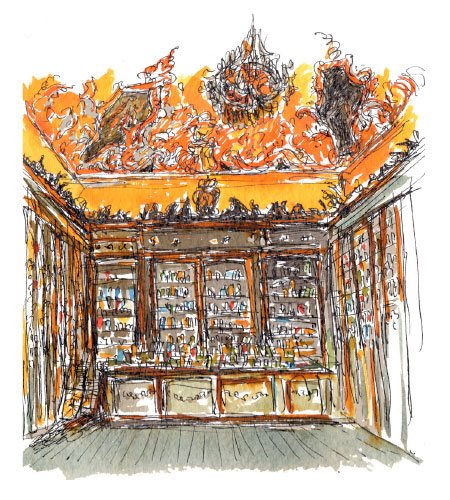
Santa Maria Novella, Florence by Jason Wu
Florence is a great city for walking, which is how I came across the Officina Profuma-Farmaceutica di Santa Maria Novella (to give it its full Italian name). This exquisite old apothecary celebrated its 400th birthday last year, but has been in existence since 1221, when Dominican friars from the nearby church grew herbs for medicinal purposes. Whenever I walk into this cool, dignified building, I always feel as if I am stepping into a church, with its vaulted ceilings, arched entrances, tiled floors and tall, elegant proportions. It’s like going back in time, with all the bottles, glass-fronted cabinets and neatly attired staff.
What I love most about it – aside from its palatial interiors – are the beautiful scented products. Everything is handmade, from soaps and creams to the famous colognes and fragrances. Lily of the valley, rose, violet, jasmine, honeysuckle and iris are just a few of the scents that fill the air. “The Water of the Queen” was created here for Catherine de’ Medici in the 1500s, a combination of citrus and bergamot, and is still Santa Maria Novella’s signature scent today. The apothecary is presided over by a very elegant Italian gentleman called Eugenio Alphandery, who keeps one foot in the past with his dedication to old-world traditions while keeping his eye on the future of the brand. But everything is organic and made by artisanal methods and I love it that many of the ingredients are grown locally in the hills around Florence. The packaging is really gorgeous, too. Santa Maria Novella is a feast for the senses, its old-fashioned ways a welcome respite from the craziness of the 21st-century world outside its doors.
Your address: The St. Regis Florence
Berry Bros. & Rudd, London by Jancis Robinson
I first discovered this lovely old wood-panelled wine shop in the 1970s, when I started to write about wine. Berry Bros. had been there for a very long time by then. It was founded as a coffee shop at the end of the 17th century, and they still have the scales that were used to weigh the coffee – and the clientele. Lord Byron, William Pitt and the Aga Khan were all weighed here, and regular customers can do the same to this day. The place is an extraordinary slice of history. It has uneven floorboards, high wooden desks (with PCs hidden within), a warren of rooms to the side and wine-filled cellars below. In the 1930s, Charles Walter Berry (the place is still owned and run by Berrys and Rudds) took what was then considered the extraordinarily adventurous step of touring the wine regions of France. Before that, English wine merchants stayed at home and required their vast imports of wine to come to them. These days, the chairman, Simon Berry, has cleverly retained the historic aura of Berry Bros while pioneering all sorts of 21st-century initiatives, such as online retailing and a Hong Kong operation. The historic cellars are now hired out as event spaces and do duty as a wine school. They also hold a lot of tastings, so I’m there at least four times a year. I have many fond memories of meals eaten there, but probably my favourite is of a dinner held in aid of Wine Relief, at which one half of a couple bid £20,000 for a prize lot – without the agreement of the other half! If Berry Bros and Rudd were to close, I’d think that life as we know it had ceased.
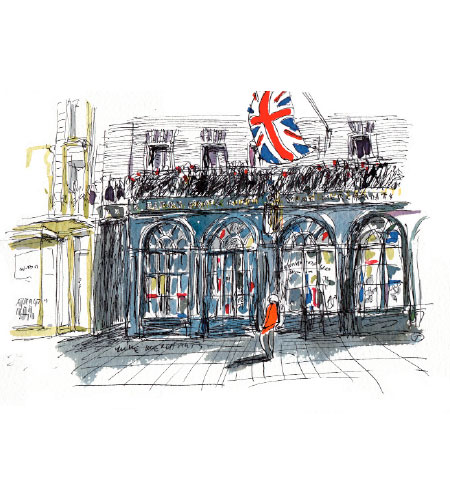
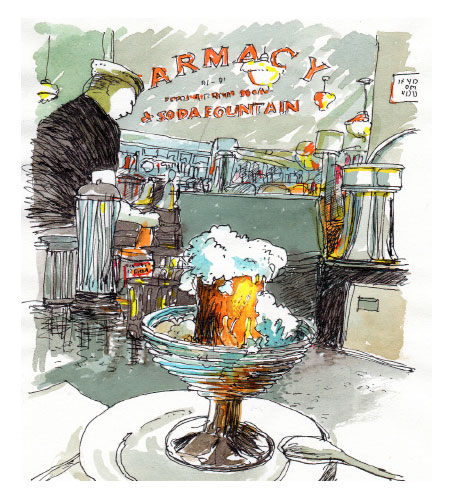
The Brooklyn Farmacy & Soda Fountain, New York by Alain Ducasse
I just adore this place, which locals affectionately call “The Farm”. It was my co-author, Alex Vallis, who first introduced me to the Brooklyn Farmacy & Soda Fountain, and I was touched by the old-fashioned styling, which retains the original pharmaceutical cases and penny-tile floor. And it’s good to know that this delightful Brooklyn enterprise has helped revive interest in the great American soda fountains that existed in big cities and small towns from the late 19th century to the 1960s. Like those wonderful places, this modern-day version offers sweet, homemade soft drinks and the staple – chocolate egg cream. I’ll never forget the first time I tried this dangerously addictive dessert-drink made from chocolate syrup, soda water and cream. The cool, fizzy, chocolate concoction evokes dreams of a mythical golden age in New York. And, trust me, you will always find room for the egg cream. I truly believe that co-owners and siblings Gia Giasullo and Peter Freeman, whose father was a shopkeeper in Greenwich Village for 30 years, have preserved a piece of culinary history. The Farmacy has become part of the fabric – some might say the heart – of this quaint Carroll Gardens neighborhood, and it wouldn’t be the same without it. The shop is lined with shelves of local artisanal foods, helping to sustain and promote the neighborhood – I like that. Every chance I get when I’m in New York, I come to recharge my batteries. It’s about simple pleasures, with a generous helping of nostalgia. Kids from one to 92 will find something in this place; that which is authentic never goes out of style.
Your address: The St. Regis New York
Palazzo Spada, Rome by Iwona Blazwick
The combination of the greatest architectural monuments in the world – the Pantheon, the Colosseum, St. Peter’s – fantastic weather, close friends and a burgeoning contemporary art scene make Rome a perennial destination. But I also love its hidden quirks and secrets, and one of my favorite places is Palazzo Spada on Piazza Capo di Ferro. I love the fact that the arcade is both a serious architectural composition and an optical illusion – the Baroque artists were brilliant at playing with perspective. My parents were architects and I almost studied it, so this is a perfect combination of architecture and the art of trompe l’oeil. The artist Cesare Pietroiusti first revealed this marvel to me. It was a cardinal, a mathematician and a sculptor who joined forces in 1632 to create this astonishing optical illusion in the heart of the city. The 16th-century palazzo was bought by Cardinal Spada, who commissioned the starchitect of his day, Francesco Borromini, to add a Baroque flourish. Borromini built a 40-metre colonnade which looks down on to an elegant marble statue. If you look along this beautiful arcade, you will see the spectacle of live cougars leaping across its colonnaded perspective. The shocking truth is, however, that it is only meters long and the statue a miniature 60cm high. The mountain lions are just stray cats made to look hair-raisingly enormous by the false perspective plotted with the help of a mathematician. Add to this the Palazzo Spada Collection, which includes Andrea del Sarto, Brueghel, Caravaggio, Dürer, Rubens and Titian, plus Artemisia Gentileschi, the sole woman artist to gain recognition from the Baroque period – and you have a very special place indeed.
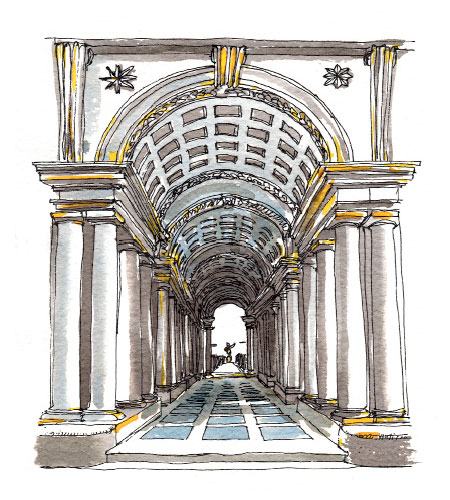
Iris, you were born and raised in New York, right?
I was raised in Astoria, Queens, and lived there until I married. My grandparents were settlers, actually, and caught the boat here from Long Island.
What memories do you have of coming to the city as a child?
Well, the city was the mecca. You would go there for shopping, or an event such as the Easter Parade – everybody in their spring finery, looking swell. In those days you wouldn’t see a person walking on Fifth Avenue without a hat and gloves. Today you’re lucky if they have shoes.
I remember a story you told me about your first experience shopping alone in the city…
Yes, I was 11 years old. It was Easter time and I needed a new outfit and bonnet, but my mother had no time to go shopping with me. So she gave me $25 to go into the city by myself. I went to S. Klein and found a dress that I just flipped over. All silk, poet sleeves, with a tie front, for only $12.95. I gave thanks to God and $12.95 to the cashier, and then went to A.S. Beck and got a smashing pair of shoes for $3.98. I had enough left for a nice little lunch and the bus home. My mother approved of my sense of style and my dad approved of my economical choices. My grandfather, who was a master tailor, was the only one who was not impressed.
Where were the memorable places that you lived in New York?
After I got married I moved into the city. I haven’t moved around that much, but before living here, we had a great townhouse on 79th Street. What we had in charm we lacked in plumbing. Nothing worked, but it was fabulous.
In what decade or era would you say New York was at its most elegant?
The late 1940s or 1950s, before the youth revolution. It was glamour; glamour doesn’t exist any more. People like glamour – especially men. I think men are more romantic than women, anyway.
Did you have any favorite spots in the city during that era?
Oh, there was fabulous nightlife, glamorous clubs like the Copacabana – where, if you were lucky, you could sit ringside and touch Frank Sinatra. Great jazz clubs, restaurants… Henri Soulé ran an extraordinary French restaurant called Le Pavillon. They all had dress codes – you couldn’t go in looking like a slob. It was nice to have people looking elegant. They always had a coat and tie rack for men who came in without them, and nothing would fit, so they’d sit there looking like the village idiot or a grade-school dunce. There was also Ben Marden’s Riviera in New Jersey. Everyone used to go. Lucille Ball was in the chorus. People also entertained at their homes beautifully. Guests came dressed to the nines. There was an article of clothing called the “hostess gown,” which you don’t see any more.
Did you frequent any of New York’s great jazz clubs?
El Morocco and the Stork Club. Fifty-Second Street was very important in the 1940s – the whole street, with one place next to another. I had a boyfriend who was mad for Billie Holiday so we used to go there all the time.
Do you have any fond memories of The St. Regis New York?
It was always a very beautiful hotel, and we used to go to the King Cole Bar there. It was a place for people to meet.
When you’re in New York these days, where do you like to go? We love to eat at
La Grenouille – it’s very old-world, very elegant. People come well dressed, the floral arrangements are spectacular and the food is divine… and yet it’s very natural. Some of these new restaurants that are so la-di-da are very pretentious.
Where do you like to shop today in the city?
I don’t shop very much. I don’t need to shop, I’ve got so much. But New York does have great discount stores, like Loehmann’s, and great sample sales.
What’s a highlight of your career?
We did major work at the White House, through more than nine administrations. We did many historic restorations: the Renwick Gallery, Blair House, the Senate, the State Department, Theodore Roosevelt’s birthplace and the Decatur House, among others.
At 91, you have a whole new career as a spokeswoman, model, teacher and fashion icon…
Oh, it’s hysterical – the other night I did a personal appearance at Bloomingdale’s for my new handbag collection, and people were lining up. I’m the same as I ever was but all of a sudden I’m cool. It’s almost embarrassing. My husband and I think it’s very funny, but I also think it’s very sweet. I’m touched that at this stage of my life I’m having so much fun.
What projects are you working on?
I’ve done a line of sunglasses and readers for Eyebobs. I have a collection of purses called Extinctions, and a new line of shoes for HSN. I did a collection with MAC cosmetics and I’ve also been working on a perfume. I teach visiting students as a professor for the University of Texas, which keeps me very busy.
How did you feel when MAC approached you?
I thought it would be fun. When I do these things I really put work into it, choosing the colors and textures. I don’t just put my name on it. And a bonus is that I’ve met some very nice people from it.
Do you feel that you have helped in some way to alter the perception of ageing in popular culture?
I hope so; I think so. Maybe that’s one of the reasons I’ve become so popular, because I’m so old. I’m a cover girl in my dotage, a geriatric starlet. The world’s oldest living teenager.
What do you love about being in New York?
There’s no place in the world like New York. If you can’t find it in New York, it doesn’t exist. It’s the heartbeat of the world.
What advice do you have for someone visiting New York?
You have to be like a sponge and soak it all up. It’s a walking city with some of the best museums and shops, with everything you might want to buy, whether you need it or not. Every kind of food you might want to taste is here. And it all exists in all price ranges. What’s the Sinatra song… if I can make it there, I’ll make it anywhere.
So, where do you want to retire?
I don’t want to retire ever. I think retirement is a fate worse than death.
advancedstyle.blogspot.com
For a privileged few car lovers, high-end custom-design is making their fantasies a reality. The luxury brands are taking what used to be known as the “options list” in car design and offering exhaustive “personalization”. We’re talking here about ways of customizing your new motor to make it utterly unique, and the likes of Bentley, BMW, Ferrari, Aston Martin, Lamborghini, Mercedes, Porsche and Rolls-Royce are only too happy to oblige. A comparison with the famed tailors of London’s Savile Row is apt, not least when it comes to Ferrari’s interpretation – it has named its custom-design plan “Tailor-Made”. It’s the vision of Lapo Elkann, the charming high-flying grandson of Fiat kingpin and style icon Gianni Agnelli. Elkann calls himself a “freestyle entrepreneur”, and it’s his idiosyncratic approach to life that runs through Ferrari’s Tailor-Made concept.
In dedicated ateliers annexed to the main Ferrari showrooms around the world, clients can choose between “Classica” (retro styling from the 1950s and 1960s) and “Scuderia” (racing design), or let their imaginations run riot with “Inedita”. Pinstriped seats, cashmere roof lining, or carbon fiber and titanium trim – it’s all possible. “Today, luxury has to be open to new materials and new elements,” Elkann says. “If you’re spending that sort of money, you want the freedom to make the product look the way you want it to look rather than the way the company does.” While Elkann is something of an iconoclast and revels in the possibilities of high-tech new materials, tradition still plays a role. Ferrari suppliers include the celebrated furniture designer and materials experts Poltrona Frau, whose mantra intelligenza delle mani (clever handcrafting) informs the distinctive interiors of today’s Ferraris, and is crucial in Tailor-Made. “There is an almost infinite number of colors for our leather,” the company chairman Franco Moschini says. “There are now more than 90 colors compared to the five or six in the past. The skins are analyzed individually, because each animal is different and has lived a different life.”
Another Tailor-Made supplier is the Piedmontese fabric-maker Vitale Barberis Canonico, whose work with the company is more akin to that of a tailor than an industrial partner. And in a nod to Ferrari’s early days in the late 1940s and early 1950s, when handcrafted bodywork was made in ultra-low volumes for the aristocracy, films stars and industrialists, the company’s Special Projects division will design an entire car to your personal specifications. Eric Clapton is one of the Ferrari clients to explore this avenue with his SP12 EC. Was overseeing the design an enjoyable process? “Oh, unbelievable,” he says. “One of the most satisfying things I’ve ever done. There will never be anything like this again. This is me aged seven listening to [F1 drivers] Fangio and Ascari.”
Victoria Beckham is another big name to turn if not designer exactly, then specifier. Her 2011 limited edition of the Range Rover Evoque comprised only 200 units worldwide, yet despite costing around $128,500, it was an instant sell-out. A hot brand, superstar name and custom design all aligned with a genuinely desirable product, underpinning the marketing voodoo. In matte grey, with rose gold accents inspired by the men’s gold Rolex that her husband David had given her, and with a cabin trimmed in highly desirable buttery aniline leather, the VB Evoque is a notably tasteful example of limited-edition design. “I like to think outside the box,” Mrs. Beckham told me at the car’s launch in Beijing. “Why shouldn’t I design a car? When Gerry [McGovern, Land Rover’s design director] approached me to do this, it was certainly a challenge. I’d never designed a car before, so I think I brought a naivety to the project, though I’ve enjoyed customizing the cars David and I have bought over the years. I didn’t want a car that was particularly feminine, I wanted something that David also wanted to drive.”
Custom car design is a global trend, but individual countries’ traits can appeal across borders. A yearning for authenticity is one of the things that most commends say, Bentley to the booming Chinese market. British luxury automakers have a rich history in wood, leather and marquetry, and as the brand’s chief interior designer, Robin Page, puts it: “By the time you work out all the options [of materials] and all the combinations, there are millions of scenarios.” In fact, Bentley has arguably the richest history in custom design. Its Mulliner division offers “specialist personal commissioning,” a promise that is backed by a relationship that goes back almost a hundred years. The division is named after H.J. Mulliner & Co, the coachbuilder that the company founder W.O. Bentley asked to create the bodywork for his 1919 EXP1 prototype. Mulliner originally built Royal Mail carriages in the 18th century, and handcrafted saddles before that.
This sort of backstory plays well in emerging markets. “Craftsmanship and attention to detail is what defines British design,” Aston Martin’s chief designer Miles Nurnberger says. “We’re extremely creative, but we mix that with a pragmatism. German design is very pragmatic and very exacting, but can lack creativity. French design is creative, but might lack refinement or execution. British design strikes a good balance. We like modern architecture, but we also like quite homely things and comfort. There’s purity to British design, and it has honesty. Others might use something that looks like metal, but we actually use metal.” Gavin Hartley is head of custom design at Rolls-Royce, a company that has been working in the field for decades. “Whether it’s a house or a yacht, our customers don’t generally choose from lists,” Hartley says. “They’re beyond conforming to what other people might think. It’s an opportunity for dialogue with individuals, to allow them to pursue their own ideas.
We’re harking back to the early days of motoring, to the coach-building era, when there was less standardization and more choice. “Different rules definitely apply, and it often makes you question what good taste actually is,” Hartley continues. “You might think you are always right and everyone else is wrong, but in this business you are constantly challenging the arrogance of that assumption. But the people who come to us want a Rolls-Royce sort of solution, so it tends to be consistent with what we want to do – which is excellent, beautiful engineering.” Fortunately, as with other areas of automotive design, there is a notable trickle-down effect: the runaway success of the latest Mini, Citroën DS3 and Fiat 500 has democratized custom car design. Mass-produced they may be, but none is identical. Sustainability is also important: recently, the Peugeot Onyx concept car showcased an interior trimmed in felt and recycled newspaper so thoroughly compressed that it felt like wood. And even if the exterior matches a thousand other models, the endless possibilities for creating something unique on the inside provides a particular satisfaction, the feeling of knowing that no one else possesses anything like it.
Your address: The Bentley Suite, The St. Regis New York, a collaboration bringing the St. Regis and Bentley partnership to life.
